-
 2025-12-24 22:08
2025-12-24 22:08
By Soheila Zarfam
UNSC session shows West failed in snapback gamble
Meeting sees US and Europe defend hardline stance, Iran and allies call for end to failed approach
TEHRAN – Western states dragged Iran and members of the UN Security Council to a session on Tuesday to push for the implementation of pre-JCPOA UN sanctions against Iran, which the E3 (Germany, UK, France) managed to be reinstated back in August, but faced substantial challenges in implementing them due to opposition from a host of countries, including Iran’s most powerful allies, Russia and China.
-

By Garsha Vazirian
Israel’s digital house of cards
Why the cyber superpower myth is failing
TEHRAN – For decades, Israel has meticulously curated an image of itself as an impenetrable "cyber superpower," a high-tech "villa in the jungle" where the fabricated "start-up nation" myth provided a psychological shield for its settler population.
-

By Sondoss Al Asaad
Implications for Yemen’s prisoner exchange
BEIRUT—A historic breakthrough has emerged in Yemen’s humanitarian landscape with the signing of an agreement to release 1,700 prisoners from the army and popular committees in exchange for 1,200 detainees from the opposite side, including seven Saudis and 23 Sudanese.
-

By Wesam Bahrani
Gaza truce turns to strategic impasse
TEHRAN – The resistance in Gaza is fighting a battle guided by a logic of achievable deterrence.
-

No rules, no inspections until legal clarity from IAEA: Iran nuclear chief
TEHRAN – Iran’s senior nuclear official has clarified that the nation will not entertain illegitimate demands for the inspection of its nuclear facilities damaged in acts of foreign aggression.
-

‘Maritime piracy in Caribbean’, Iranian MPs condemn US military actions near Venezuela
TEHRAN – A group of 150 Iranian lawmakers has issued a strong condemnation of recent U.S. actions in the Caribbean, including the interception and pursuit of oil tankers, calling them acts of maritime piracy and a significant threat to regional stability.
Politics
-

‘Who can solve Iran’s many problems?’; created the fire, claims the hose
A recent New York Times’ report on Iran , titled “who can solve Iran’s many problems? Not I, says the president”, is not an attempt to grapple with the country’s complex economic and political realities. It is a carefully constructed narrative exercise—one that deliberately removes decisive external factors in order to assign responsibility for Iran’s challenges in a narrowly defined, politically convenient way. What emerges is not journalism in the classical sense, but narrative warfare by other means.
-

Iran questions US definition of ‘diplomacy’ after envoy’s ironic remarks at UNSC
TEHRAN – About ten hours after a UNSC session on Iran’s nuclear program concluded on Tuesday, as morning broke in Tehran, Iranian officials began to publicly react to remarks put forth by the U.S. during the meeting. Their reactions signaled that no one in Tehran trusts American pronouncements about diplomacy anymore.
-

Tehran sends sympathy message after fatal plane crash kills Libyan army chief
TEHRAN – Iran has extended its condolences to Libya following the death of the country’s army chief in a fatal plane crash near Ankara.
Sports
-

Esteghlal into AFC Champions League Two 2025/26 Round of 16
TEHRAN - Esteghlal made their way into the Round of 16 with a comprehensive 3-0 win over Al Muharraq in their final AFC Champions League Two 2025/26 Group A tie on Wednesday.
-

Late Saber Kazemi would have turned 27 today
TEHRAN – The late Iranian volleyball star Saber Kazemi would have celebrated his 27th birthday today.
-

World title is within reach: Mohammad Dastan
TEHRAN — Iran national beach soccer goalkeeper Mohammad Dastan believes the team have put their elimination from the 2025 Beach Soccer World Cup behind them and are now fully focused on achieving their long-standing dream of winning the world title.
Culture
-

Israeli forces injure Press TV correspondent during West Bank raid
TEHRAN- An attack by Israeli occupation forces on a Press TV correspondent in the besieged West Bank has left her injured, highlighting the regime's blatant disregard for the rights of journalists and the Palestinian people.
-
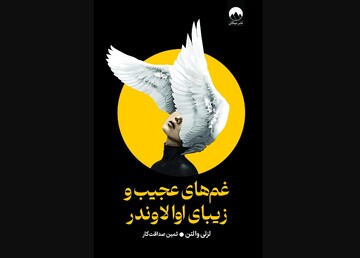
“The Strange and Beautiful Sorrows of Ava Lavender” at Iranian bookstores
TEHRAN- “The Strange and Beautiful Sorrows of Ava Lavender” by Canadian writer Leslye Walton has been published in Persian.
-
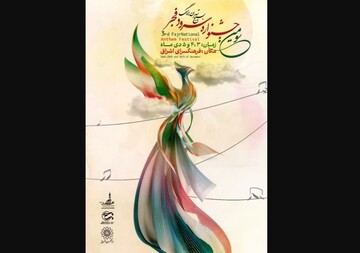
Fajr Anthem Festival kicks off in Tehran
TEHRAN- The 3rd edition of the Fajr National Anthem Festival opened in Tehran on Wednesday, featuring a several performances by selected groups of chorus singers.
Economy
-

Iran exports non-oil goods worth $4.3b to Turkey in 8 month
TEHRAN- Iran exported non-oil commodities valued at $4.393 billion to Turkey during the first eight months of the current Iranian calendar year (March 21-November 21), the Islamic Republic of Iran Customs Administration (IRICA) announced.
-

Tehran, Astana seek to boost trade ties through logistics, regional cooperation
TEHRAN – Trade ties between Tehran and Astana are entering a more dynamic phase following the recent presidential visit to Kazakhstan, with both sides seeking to expand economic cooperation through logistics projects and regional partnerships, a senior trade official said.
-
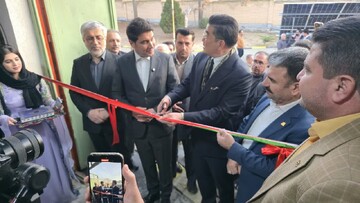
South Korea funds $500,000 vocational training facilities in western Iran
TEHRAN – Two specialized vocational training workshops were opened and equipped in Iran’s western Kordestan province with $500,000 in funding from South Korea, state media reported on Tuesday.
Society
-

Japan interested in boosting environmental, pharmaceutical ties with Iran
TEHRAN – Japanese officials have announced their willingness to expand cooperation with Iran in areas that are not subject to sanctions, particularly the environment and pharmaceuticals.
-
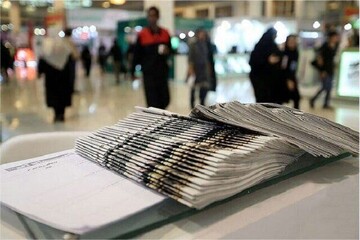
125 Iranian journals indexed in global databases in 4 years
TEHRAN – Thanks to targeted planning and coordinated efforts, about 125 Iranian journals have been indexed by the reputable databases of Scopus and Web of Science over the past four years, an official with the Ministry of Science has said.
-

‘WHO is Iran’s strategic partner in health sector’
TEHRAN – The deputy health minister, Alireza Raeisi, has said the World Health Organization is a strategic partner and a norm-setting reference for the country's health sector.
Tourism
-
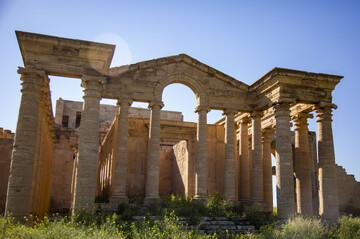
Parthian art and architecture linked East and West across a vast empire
TEHRAN – For almost 500 years, the Parthian Empire controlled one of the world’s most important cultural and trade routes, stretching from Central Asia to the Mediterranean.
-

Iran-Kazakhstan cultural night held in Tehran to promote shared heritage
TEHRAN - Iran and Kazakhstan held a joint cultural night at Tehran’s Niavaran Palace complex on Monday to promote shared heritage and strengthen cultural diplomacy between the two Caspian Sea countries, officials said.
-

Gisoom seeks UN Tourism label for Best Tourism Villages
TEHRAN — Iran’s Gilan provincial department of cultural heritage said it is preparing a bid to have the village of Gisoom included on UN Tourism’s Best Tourism Villages list.
International
-

Israel’s digital house of cards
TEHRAN – For decades, Israel has meticulously curated an image of itself as an impenetrable "cyber superpower," a high-tech "villa in the jungle" where the fabricated "start-up nation" myth provided a psychological shield for its settler population.
-

Gaza truce turns to strategic impasse
TEHRAN – The resistance in Gaza is fighting a battle guided by a logic of achievable deterrence.
-

Implications for Yemen’s prisoner exchange
BEIRUT—A historic breakthrough has emerged in Yemen’s humanitarian landscape with the signing of an agreement to release 1,700 prisoners from the army and popular committees in exchange for 1,200 detainees from the opposite side, including seven Saudis and 23 Sudanese.
Video Comment
-

Ayatollah Khamenei’s vision of freedom and humanity discussed in intl. conference
-

Iran hosts SCO joint anti-terror drills
-

Holy Mary Metro Station marks interfaith unity in Tehran
-

Academics analyze social dimensions of Resistance in Tehran conference
-

Culture minister highlights year of progress in arts, global image enhancement
Most Viewed
-
Trump /// //// // /// //// /////
-
The fragility of Israeli security
-
Iran’s heaviest imaging satellite to be in space by Monday
-
Israel has launched cognitive warfare on Iran
-
Sanctions intended for nuclear pressure instead fuel human suffering in Iran: Stanford researcher
-
Iran boosts renewable power capacity by 157% in 18 months
-
In nuclear standoff with US, Moscow reiterates backing for Iran, says Tehran has ‘right’ to program
-
Essential components of resistance speech
-
Greenland: Trump’s empire dream in the Arctic
-
Missile drill in Tehran, panic in Tel Aviv
-
Exploring Iran’s Christian past: a journey through Edik Baroni’s book
-
Pezeshkian stresses Caucasus strategy as he tasks new envoy with bolstering ties
-
Preparedness is not provocation
-
From nuclear fear to missile anxiety: Israel’s reframing of the Iran threat
-
Iran hosts IOFS meetings on smart livestock farming, climate change







